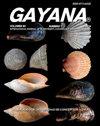智利北部虎虻新记录,1885(双壳亚目:虎虻科)
IF 0.2
4区 生物学
Q4 ZOOLOGY
引用次数: 1
摘要
在智利,深水软体动物的研究很少,除了一些经典作品(例如Smith 1885;Dall 1889, 1890等)和主要在智利中南部进行的研究(Sellanes & Krylova 2005, Holmes et al. 2006, Fraussen & Sellanes 2008等),只有少数最近的作品回顾了该国北部地区的物种(Bernard 1988, Guzmán et al. 1998, v本文章由计算机程序翻译,如有差异,请以英文原文为准。
New record of Cuspidaria patagonica Smith, 1885 (Bivalvia: Cuspidariidae) in northern Chile
Deep water mollusks have been sparsely studied in Chile and, apart from some classic works (e. g. Smith 1885; Dall 1889, 1890, among others) and studies done mostly in central-southern Chile (Sellanes & Krylova 2005, Holmes et al. 2006, Fraussen & Sellanes 2008, among others), only a few recent works have reviewed species from the northern areas of the country (Bernard 1988, Guzmán et al. 1998, Véliz & Vásquez 2000, Pacheco & Laudien 2008, Araya 2013). Among the deep-water bivalves, genus Cuspidaria Nardo, 1840 encompasses several small species with nearly equivalve but markedly inequilateral smooth shells, with the posterior end rostrate to spoutlike and a hinge with one posterior lateral tooth (Keen 1971). This genus is represented in Chile by three species, all of them found in deep waters: Cuspidaria infelix Thiele, 1912 and Cuspidaria tenella Smith, 1907, both species found in Antarctic waters and in southern Patagonia (C. infelix) and Cuspidaria patagonica (Smith, 1885), which has been previously recorded in the Strait of Magellan (Smith 1885, Valdovinos 1999).
求助全文
通过发布文献求助,成功后即可免费获取论文全文。
去求助
来源期刊

GAYANA
Agricultural and Biological Sciences-Aquatic Science
CiteScore
0.60
自引率
0.00%
发文量
5
期刊介绍:
GAYANA is a scientific journal published by Universidad de Concepción, Chile. It is the modern version of Gayana Oceanología and Gayana Zoología. Therefore its numeration starts at volume 63(1).
GAYANA covers all aspects of zoology and oceanographic research. It is structured in five sections, defined by subject or discipline: Ecology, Biodiversity and Taxonomy, Earth Sciences, Evolutionary, and Applied Biology and Environmental Biology. Each section is in charge of an editor who receives and manages the manuscripts sent for evaluation in close collaboration with the editorial board.
 求助内容:
求助内容: 应助结果提醒方式:
应助结果提醒方式:


